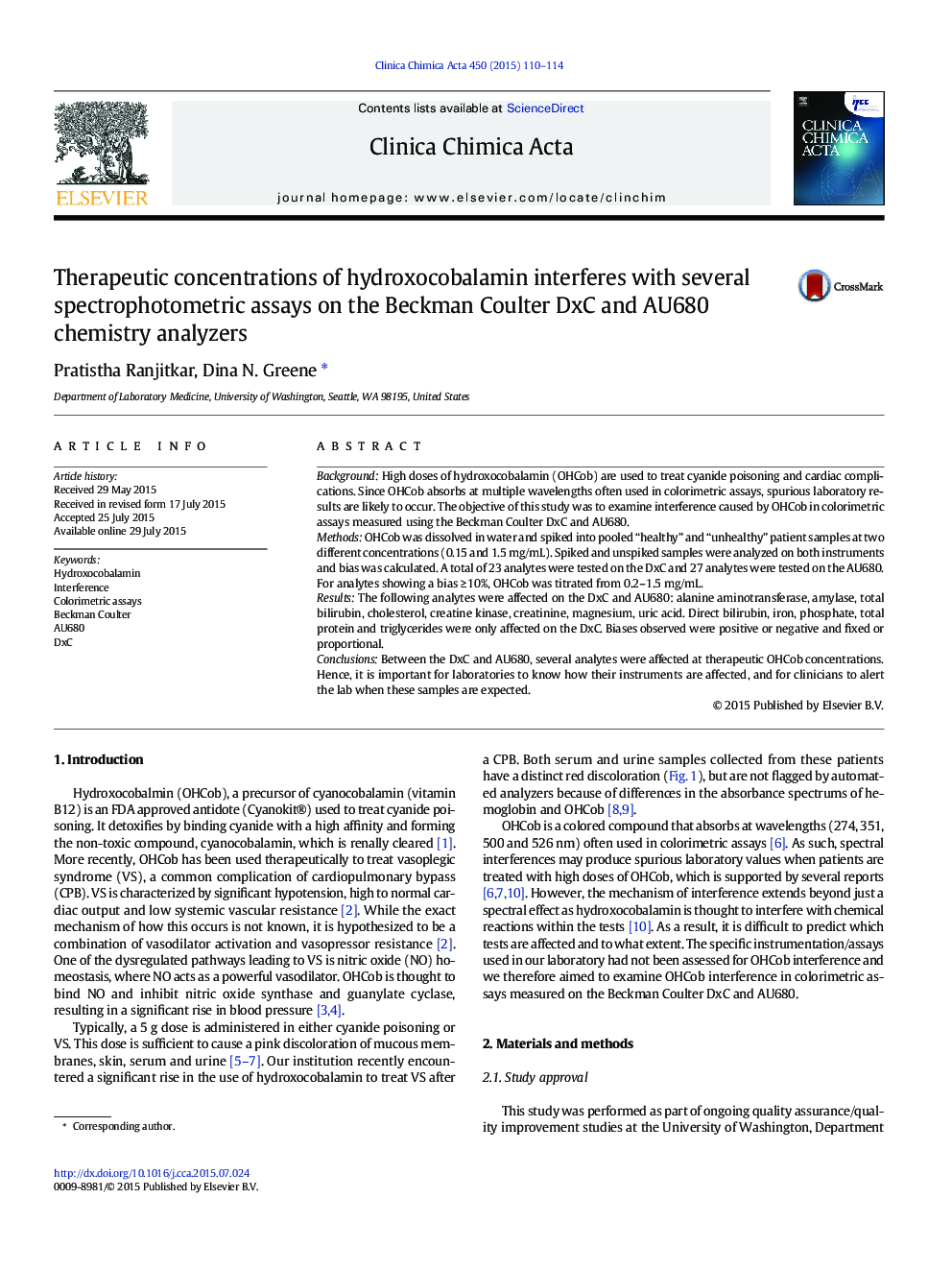| کد مقاله | کد نشریه | سال انتشار | مقاله انگلیسی | نسخه تمام متن |
|---|---|---|---|---|
| 1965216 | 1538648 | 2015 | 5 صفحه PDF | دانلود رایگان |

• Hydroxocobalamin is highly chromogenic and affects colorimetric assays.
• Assays on the DxC and AU680 are affected differentially and unpredictably.
• Interferences occur at therapeutic hydroxocobalamin concentrations.
BackgroundHigh doses of hydroxocobalamin (OHCob) are used to treat cyanide poisoning and cardiac complications. Since OHCob absorbs at multiple wavelengths often used in colorimetric assays, spurious laboratory results are likely to occur. The objective of this study was to examine interference caused by OHCob in colorimetric assays measured using the Beckman Coulter DxC and AU680.MethodsOHCob was dissolved in water and spiked into pooled “healthy” and “unhealthy” patient samples at two different concentrations (0.15 and 1.5 mg/mL). Spiked and unspiked samples were analyzed on both instruments and bias was calculated. A total of 23 analytes were tested on the DxC and 27 analytes were tested on the AU680. For analytes showing a bias ≥ 10%, OHCob was titrated from 0.2–1.5 mg/mL.ResultsThe following analytes were affected on the DxC and AU680: alanine aminotransferase, amylase, total bilirubin, cholesterol, creatine kinase, creatinine, magnesium, uric acid. Direct bilirubin, iron, phosphate, total protein and triglycerides were only affected on the DxC. Biases observed were positive or negative and fixed or proportional.ConclusionsBetween the DxC and AU680, several analytes were affected at therapeutic OHCob concentrations. Hence, it is important for laboratories to know how their instruments are affected, and for clinicians to alert the lab when these samples are expected.
Journal: Clinica Chimica Acta - Volume 450, 23 October 2015, Pages 110–114